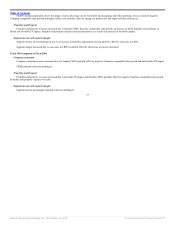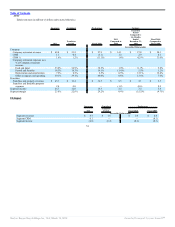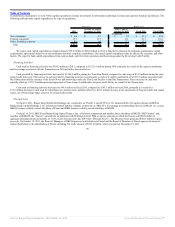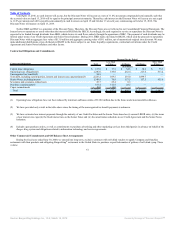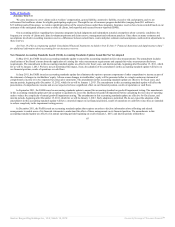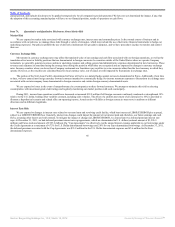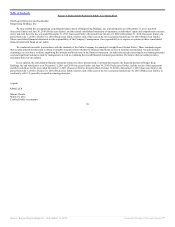Burger King 2011 Annual Report Download - page 64
Download and view the complete annual report
Please find page 64 of the 2011 Burger King annual report below. You can navigate through the pages in the report by either clicking on the pages listed below, or by using the keyword search tool below to find specific information within the annual report.
Table of Contents
purchase price to the estimated fair values of the assets acquired and liabilities assumed and requires judgments to be made that could materially affect our
financial position and results of operations. Significant assumptions and estimates made in connection with estimating the fair value of assets acquired and
liabilities assumed include cash flows expected to be derived from the use and eventual disposition of the asset, the timing of such cash flows, the remaining
useful life of the assets and applicable discount rates. These estimates and assumptions are generally Level 3 inputs because they are not observable. In the event
actual results vary from any of the estimates or assumptions used in the valuation process, we may be required to record an impairment charge or an increase in
depreciation or amortization in future periods, or both.
Goodwill represents the excess of the purchase price over the fair value of assets acquired and liabilities assumed in connection with the Acquisition. Our
indefinite-lived intangible asset consists of the Burger King brand (the “Brand”). We test goodwill and the Brand for impairment on an annual basis and more
often if an event occurs or circumstances change that indicates impairment might exist.
Our impairment test for goodwill requires us to compare the carrying value of reporting units with assigned goodwill to fair value. If the carrying value of
a reporting unit exceeds its fair value, we may be required to record an impairment charge to goodwill. Our impairment test for the Brand consists of a
comparison of the carrying value of the Brand to its fair value on a consolidated basis, with impairment equal to the amount by which the carrying value of the
Brand exceeds its fair value.
When testing goodwill and the Brand for impairment, we make critical estimates and assumptions similar to those made in connection with acquisition
accounting. In the event that our estimates or related assumptions change in the future, we may be required to record an impairment charge.
During 2011, we changed our annual goodwill impairment testing date from April 1 to October 1 of each year. This change was made to better align
impairment testing procedures with the Company’s new fiscal year, related year-end financial reporting and the annual business planning and budgeting process,
which are performed during the fourth quarter of each year. As a result, the goodwill and Brand impairment testing will reflect the result of input from business
and other operating personnel in the development of the budget. We completed our goodwill and Brand impairment tests as of October 1, 2011 and no
impairment resulted.
See Note 2 to our audited Consolidated Financial Statements included in Part II, Item 8 “Financial Statements and Supplementary Data” for additional
information about goodwill and intangible assets not subject to amortization.
Long-lived Assets
Long-lived assets (including intangible assets subject to amortization) are tested for impairment whenever events or changes in circumstances indicate that
the carrying amount of an asset may not be recoverable. Some of the events or changes in circumstances that would trigger an impairment test include, but are
not limited to:
• significant under-performance relative to expected and/or historical results (negative comparable sales growth or operating cash flows for two
consecutive years);
• significant negative industry or economic trends;
• knowledge of transactions involving the sale of similar property at amounts below our carrying value; or
• our expectation to dispose of long-lived assets before the end of their estimated useful lives, even though the assets do not meet the criteria to be
classified as “held for sale.”
The impairment test for long-lived assets requires us to assess the recoverability of our long-lived assets by comparing their net carrying value to the sum
of undiscounted estimated future cash flows directly associated
63
Source: Burger King Holdings Inc, 10-K, March 14, 2012 Powered by Morningstar® Document Research℠


